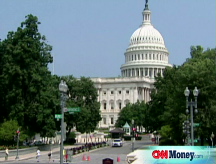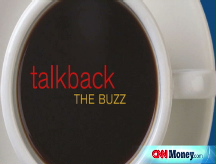Where things stand
The latest details about the government bailout of the financial industry are coming in. Here's the latest.
NEW YORK (CNNMoney.com) -- As the Bush administration continued to push Congress to accept its rescue proposal, the president geared up for a prime-time address to the nation Wednesday night - his biggest push yet for the proposed $700 billion bailout of the U.S. financial system.
Earlier in the day, Congressional Budget Office Director Peter Orszag testified before the House Budget Committee that the bottom-line impact of the Treasury's proposal on the federal budget cannot be properly estimated, but the net cost will be "substantially less" than the $700 billion requested by the Bush administration.
At the same time, Federal Reserve chairman Ben Bernanke testified before the Joint Economic Committee. He received support from lawmakers for taking action to address the crisis but resistance about parts of the Treasury plan.
Later in the day, Bernanke and Treasury Secretary Henry Paulson testified before the House Financial Services Committee, a day after the pair defended the Bush administration's plan in front of the Senate Banking Committee.
As new Democratic proposals have shifted the terms of the debate and some conservative Republicans have raised concern about the potential cost, the battle over the bailout is just beginning.
The Bush administration's plan would allow the Treasury to buy up troubled assets from financial institutions. The aim is for the government to buy the assets at a discount, hold onto them and then sell them for a profit.
The Democrats are drafting several add-ons: They want the government to get an equity stake in the companies it helps; more assistance for those at risk of foreclosure; more oversight of the program; and curbs on compensation of executives of participating companies.
Here's where the debate stands:
The plan: Though the details are still being hammered out, the Treasury says it will buy up troubled assets of American banks and institutions doing business in the United States.
Private money managers would oversee the assets while they are in the government's possession.
What remains to be seen is how the Treasury Department will structure the purchases and how much they'll pay for the assets.
One purchasing method that Treasury has suggested is a reverse auction to set the discount at which the assets would be picked up. The goal is to buy at a discount to face value. The primary target is mortgage-backed securities that have seen their value plunge due to rising foreclosures and a prolonged slide in home values, but debt ties to auto loans and credit cards may also be included.
The Treasury plan allows the government to buy the assets for two years after the plan is enacted.
A Democratic alternative proposed by Banking Committee Chairman Christopher Dodd, D-Conn., would terminate Treasury's special authority to buy up troubled assets by Dec. 31, 2009.
The Treasury thinks that by taking problem assets away from banks, financial institutions will be able to shore up their balance sheets, allowing them to lend to consumers and other banks again.
Help for housing markets: Many experts are skeptical of the plan, especially in its indirect ability to help homeowners.
Accordingly, the Senate Democrats' proposal would also require the government to include in the bailout proposal a separate systematic way to keep people in their homes.
Sen. Dodd calls for a change to federal law so that bankruptcy judges can modify mortgages in default. Under current law, judges may only modify loans on second homes.
Both of the Democratic proposals also pushed for foreclosure prevention through loan modifications and use of the HOPE for Homeowners Program on the mortgages the government will buy in the bailout.
The cost: The Treasury's proposal calls for government authorization to purchase as much as $700 billion of bad loans.
No one yet knows how much taxpayers will have to pay in the end, because the government plans on holding onto the assets until the markets improve. The Treasury then plans to sell those loans with the hope that the government might even make a profit.
In testimony before the House Budget Committee on Wednesday, CBO Director Peter Orszag said the net cost to taxpayers will be "substantially less" than the $700 billion headline number, though he said an estimate was impossible.
"It seems implausible that the U.S. would lose every cent on the dollar for the purchases it made," Orszag said.
Orszag added that the Federal Reserve may raise interest rates if the market suspects that the Treasury overpaid for assets in the bailout.
As part of the program, the Bush administration wants Congress to increase the nation's debt ceiling. Currently, it's set to rise to $10.6 trillion for fiscal year 2009, which starts Oct. 1. The proposal calls for the limit to be increased to $11.3 trillion.
House Financial Services Chairman Barney Frank, D-Mass, has advocated paying for the bailout by raising taxes on people with income exceeding $1 million a year.
Ranking member of the Senate Banking Committee Richard Shelby, R-Ala., also said taxpayers will have to help foot some of the bill.
Democratic add-ons: Democrats have expressed concern about the lack of oversight in the Treasury's proposal. Both Sen. Dodd's and Rep. Frank's plans would create an oversight board for the Treasury program as well as regular updates on the plan's progress.
Sen. Dodd would require the government to receive an ownership stake in the companies it helps. That idea would require companies who sell assets to the Treasury to give the government shares in the company.
Curbs on executive pay were also proposed in the Dodd plan but not in the Frank plan. Dodd's proposal would set standards on compensation for big wigs from institutions that take advantage of the bailout, including limits on incentives and severance packages.
Market reaction: The bailout was first announced last Thursday, and investors cheered the plan Friday, sending stocks soaring. But as it became clear that the plan would face many hurdles before enactment, stocks have sold off.
Other markets have been extremely volatile over concerns with the amount of debt the government would have to issue for the bailout. The dollar has been under pressure.
-- CNNMoney.com senior writers Jeanne Sahadi and Tami Luhby contributed to this report. ![]()






